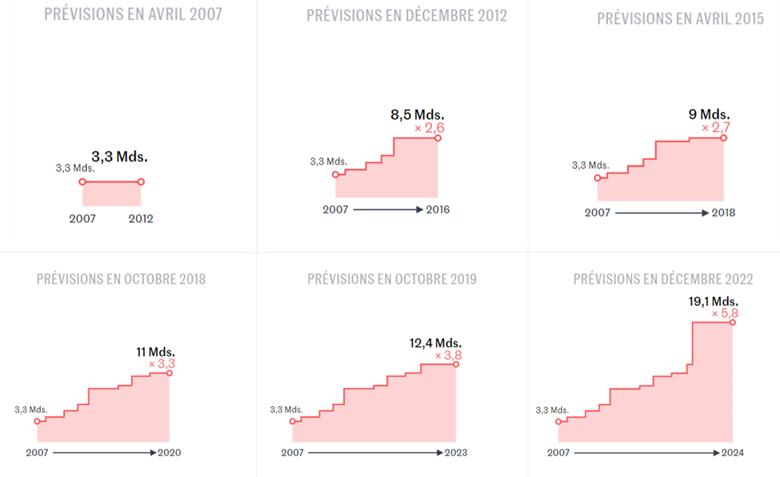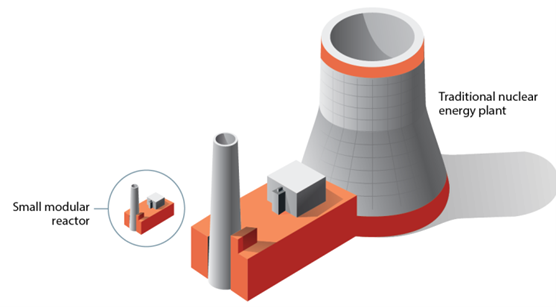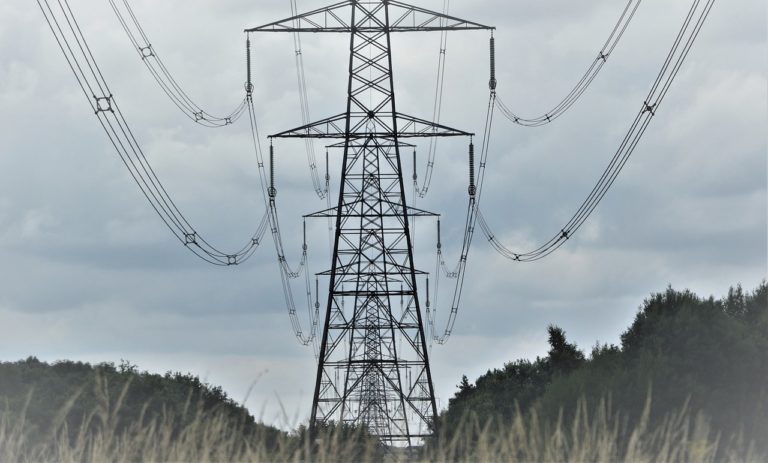2023’s COP28 concluded that “a transition without fossil fuels in our energy systems, in a just, equitative, and orderly way (…)” was necessary to limit the global climate change to 1.5ºC. For the first time in a climate change summit, the objective to do away with fossil fuels was definitively included in the final draft of the summit’s goals. This is even more impressive when taking into account the fact that COP28 took place in Dubai, a potent petrol-state. The future of energy is looking to be “green” indeed.
There are many paths to a greener world and involve things from changing the habits of citizens, focusing more on energy efficiency, technology changes, the electrification of our world, and of course, the decarbonization of electricity. When looking at solving the last point, renewable energy – electricity generated from natural sources like wind, solar, biomass, etc. – gets the lion’s share of the positive publicity.
These sources of renewables represent the current best way of minimizing the long-term negative impact of CO₂ emissions on the environment, and as such they are essential to the solution for the objective of NetZero 2050. However, our current level of technology cannot provide us a renewable energy source continuous enough (solare and wind are by nature intermittent) or potent enough to provide 100% of electricity demand. Even worse, considering that the demand for electricity will continue to grow with the electrification of the world, it is necessary to find other ways to meet it while renewable technology matures.
Nuclear energy used for the generation of electricity is continuous and usable and does not emit CO₂. Could nuclear energy be considered “green”? This article intends to explore the role of nuclear energy in the future of energy.

Sources of energy by greenhouse gas emission – Source: Our world in data
Fission occurs when a neutron smashes into an atom and splits it into smaller atoms, which then releases energy in the form of heat and radiation. This energy can be converted to mechanical energy, and then to electrical energy. Nuclear power plants function the same as traditional thermal energy plants (gas, carbon, or other fuel), differing in that the fuel used and the reaction that occurs produces very little CO₂. However, while this is all well and good, we must not forget that there are problems endemic and unique to this technology: the cost of investment is high, the risks of nuclear radiation accidents are there, and the treatment of nuclear waste is difficult to find a solution for.
Principal problems of nuclear energy
Throughout the history of nuclear energy, the development of nuclear energy for civilian use has always been associated with the development of nuclear weapons. The Treaty on the Non-Proliferation of Nuclear Weapons (1970) was signed to aid the development of nuclear energy technology without the dissemination of nuclear weaponry. However, we can see that the treaty has failed in its mission as five countries have used the material and fuel used in the development of nuclear energy technology to create nuclear arms.
In terms of finances, the construction of nuclear power plants represents an important investment: construction costs can range between 4 and 6 billion euros according to the Spanish Nuclear Society. The variation in cost is due to the creation of the project, regulation, localization, design of the nuclear center… apart from those, there is also the construction time, and the potential delays; these impact the initial investment considerably, something we can see in the construction of new EPRs. European Pressurized Water Reactors are a type of reactor typically of 1600 MW. They were intended to be an evolutionary design that guaranteed the continuity present in traditional Pressurized Water Reactors, and minimizing the risk. It’s design contains robust mitigation systems against accidents and higher security against radiation for workers. However, the first experiences in the construction of these EPRs are not positive due to high, ballooning costs. For example, in France, the EPR Flamanville 4 has been in construction since 2007, and has so far cost an additional 5 times more than the initial investment and a delay in service of 12 years.
 Duration of construction of Flamanville and the evolution of its cost, at a precise date – Source: Le Monde
Duration of construction of Flamanville and the evolution of its cost, at a precise date – Source: Le Monde
The nuclear waste produced in the production of nuclear energy is incredibly radioactive and difficult to deal with, since these only loose their harmful effects after thousands of years. And even though the nuclear waste produced by a traditional uranium plant can be recycled by refining into plutonium fuel, there are no active plutonium plants. The other option is to bury the waste. However, it is difficult to find a place to bury the waste safely (for at least 5 thousand years), and most governments do not take the issue seriously enough to find solutions, likely due to the lack of investment in the infrastructure required for effective waste storage. In any case, the nuclear industry confirms that while radioactive waste remains confined and controlled, it is not necessary to come up with a permanent solution, as with renewable energy, such a solution will come with time and investment.
In the close to 70 years we’ve been using nuclear energy, there have been 33 accidents related to nuclear plants globally, with 2 of those being a 7 on the INES scale, defined as the major release of radioactive material with widespread health and environmental effects (Chernobyl and Fukushima). Taking into account that there has been continuous construction of nuclear plants during these 70 years for a total of 422 plants by 2023, it can be concluded that, while the risk is not 0, security seems to be rather good, seeing that the majority of accidents have caused minimal injury and contamination of the environment. Of course, this is cold comfort when one considers the implications of a severe nuclear accident. Most nuclear plants have an effective average lifetime of 35 years, which also does not help security concerns.
Nuclear energy: A solution?
Apart from the cons, nuclear energy technology has its pros: It provides continuous energy; It permits the diversification of primary sources of electricity (nuclear fuel, contrary to petroleum and gas, can be found in most countries); It provides energy independence to a country; And everything at a competitive LCOE (discounting the example of the EPR).
In this manner, many countries have opted to include a strong nuclear component in their energy mix, such as the EU counting on 93 nuclear reactors, or China with a fleet of 55 reactors. The case of France is a unique success story as their nuclear fleet is responsible for 70% of the electricity production (counting the 56 generation II reactors), which makes France one of the countries with the lowest emissions with their electricity mix. Others include nuclear in more homeopathic ways: Spain (20%) and the UK (15%)
Following this, these countries invest in the long-term investment of nuclear energy. In France, in February 2022, Macron announced the national nuclear plan: the construction of 6 EPR2, 8 more along with the extension of the operating life of the current fleet up to 60 years. In China, the government intends to construct 150 new reactors in the next 15 years. In the UK, the government managed to set a goal of providing 25% of their electricity from nuclear sources by 2050, as opposed to the 15% today. The Internation Organization of Atomic Energy has predicted that the generation capacity of nuclear energy “will increase to 24% by 2030 and 140% by 2050 compared to the capacity of 2022”[1].
Alternative Technologies
El sector cuenta con avances potenciales en materia de nuevas tecnologías; los SMR (Small Modular Reactor) y EPR (European Pressurized Water Reactor). El futuro de la energía nuclear depende en gran parte de estas tecnologías que podrán tener un rol central en el horizonte energético de los próximos años.
The nuclear industry counts with potential advancements in new technologies like: the SMR (Small Modular Reactor) and EPR (European Pressurized Water Reactor). The future of nuclear energy depends greatly on whether these technologies and others not mentioned here can have a role in the energy horizon in the following years.
A small modular reactor (SMR) is a nuclear fission reactor with the generation capacity of 300 MW or less. With a size between 1/3 and 1/4 of a traditional nuclear reactor, SMRs present compact and simplified designs with advanced security characteristics. Already there exists projects for commercial SMRs, such as NuScale’s, which has been approved by which has been approved by the US regulatory commission. These reactors can be used to bypass the bottleneck of time by virtue of their comparatively easy to build and cheap construction. They are also safer than traditional plants and are easier to maintain.

Size comparison SMR vs Traditional plant – Source: Idaho National Laboratory
The current goal is to reach carbon neutrality by 2050. There is currently no such thing as a 100% green energy source, but nuclear and renewables are a potential combination for the fight against climate change and to do away with our dependency on fossil fuels. Nuclear energy stimulates debate on investment, security, treatment of nuclear watste, and nuclear weapons. Even so, new technologies offer new opportunities for efficiency, hybridization, and control of the processes. Nuclear energy is in a prime position to have a major role in this transition period.
Diego Marroquín & Céline Haya Sauvage
[1] IAEA, “Energy, Electricity and Nuclear Power Estimates for the Period up to 2050” 2023







